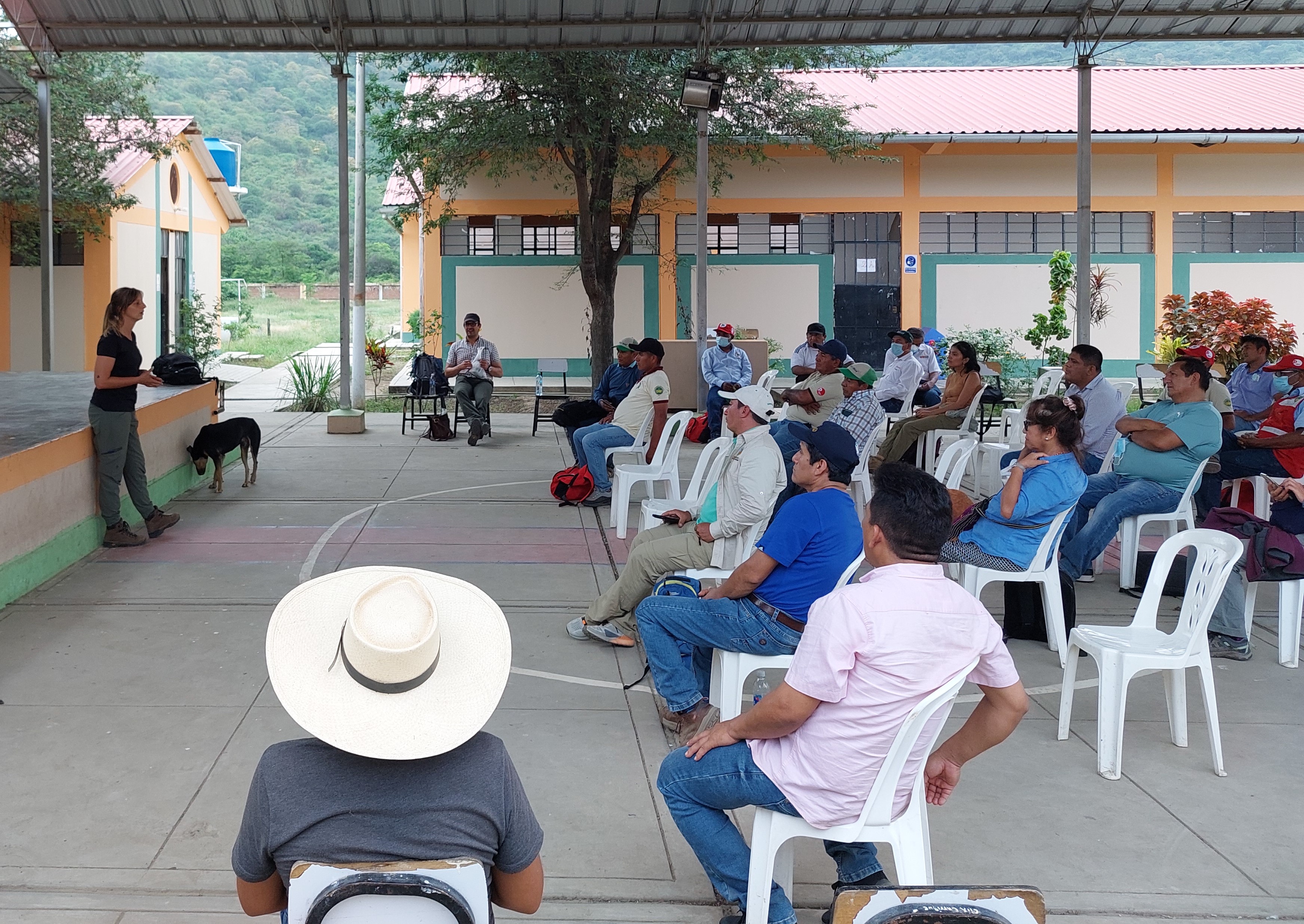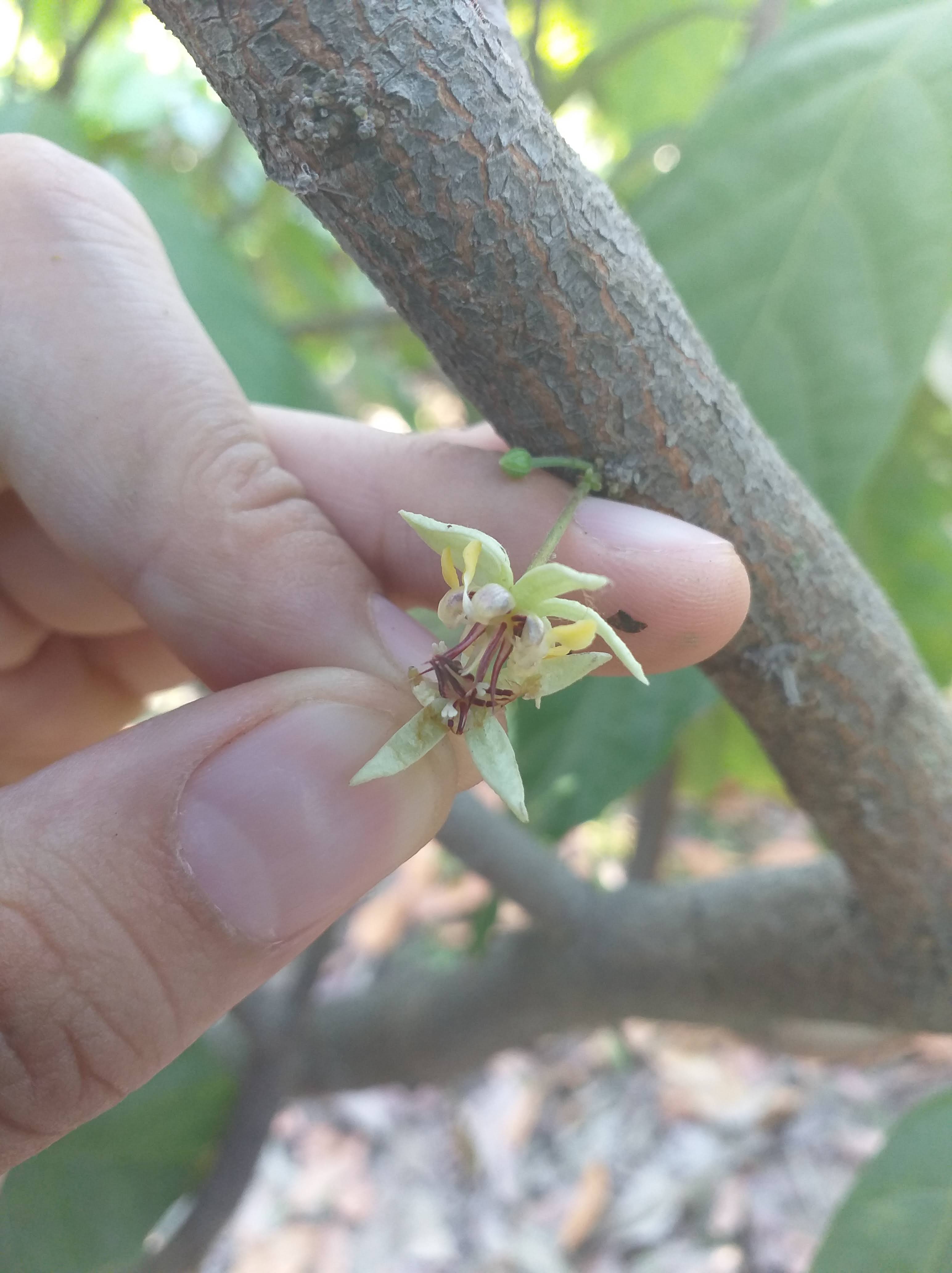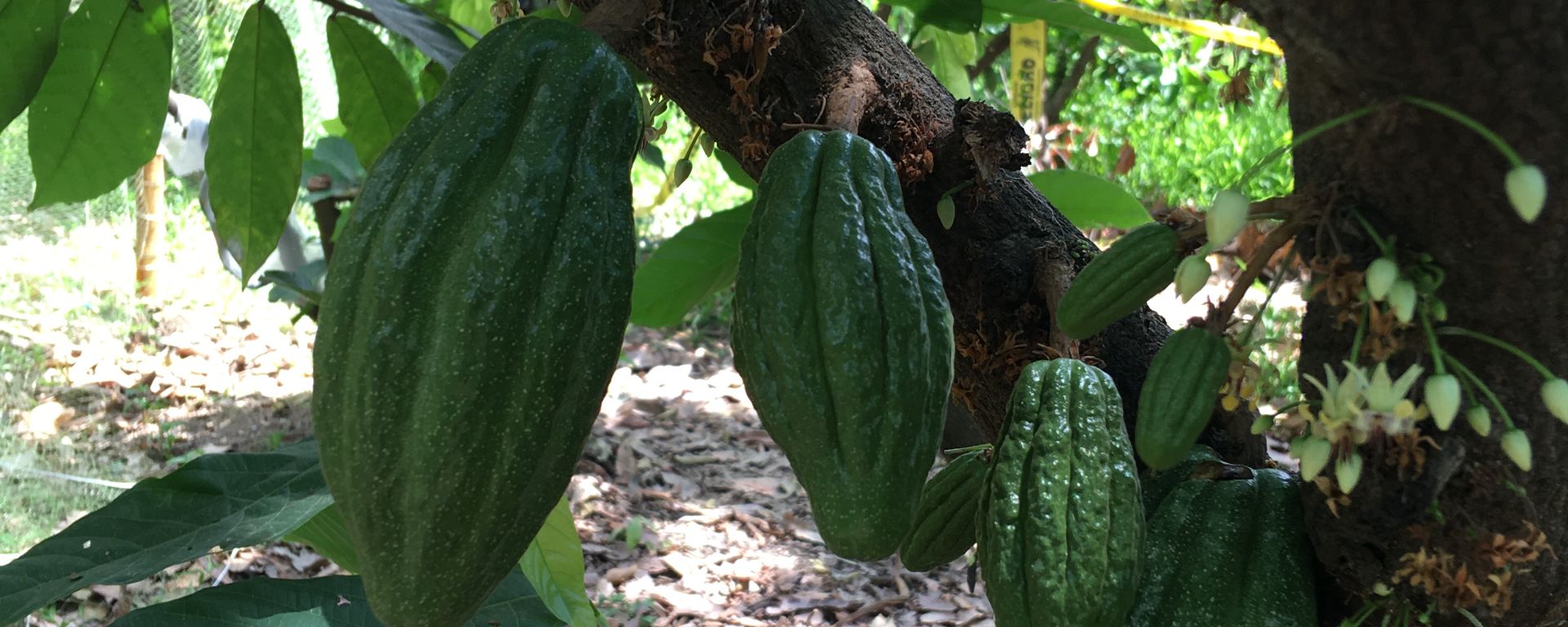Pollination services of cacao are crucial for global chocolate production, yet remain critically understudied. Author Justine Vansynghel describes her team’s latest research that seeks to develop a greater understanding of how agroforests of this crop tree can be better managed.
Cacao is a crop tree native to the amazon basin with a longstanding cultivation history throughout the tropical realm. The crop tree is understandably of large global importance because of what is manufactured with its seeds: Chocolate, tea, other sweets and even cosmetics. Despite the value of this billion-dollar crop for the global food industry, little is known about its pollination biology. This is striking, because pollination is strictly needed for fruit set and eventually, harvestable yield.
When taking a closer look at the pollination process of the crop, it becomes apparent why we know so little: cacao flowers are smaller than 2 cm in diameter and grow by thousands on the tree trunk and branches. Insects that are crawling and flying around cacao flowers are also very tiny, and very diverse, and the pollen grains have a microscopic diameter. This makes it very challenging to systematically observe which insects are transferring pollen between cacao flowers!

Our study, conducted in two Peruvian regions that each host a unique native cacao variety, sheds light on some of the aspects of cacao pollination.
Just like in the rainforest to which they are native, cacao trees are cultivated under the shade of other, higher trees, in agricultural systems called agroforests. In 20 such agroforests, we applied glue to cacao flowers to trap visitors, and we analysed the influence of shade levels and distance to the nearest forest on flower visitors.
In both regions, herbivores were the dominant flower visitors: aphids were the most frequent visitors in the north (38%), and thrips in the south (65%). Midges – tiny mosquito-like flies that are shortlisted as cacao pollinators – were less abundant on cacao flowers. Only 5% and 14% of visitors were midges in the north and south, respectively.
In the north, we counted more insects on the cacao flowers the more shaded the plantations were. In the south, on the other hand, more flowers were visited by insects in less shaded plantations, at least during the rainy season in which the study took place. The distance to the nearest forest did not play a role in either region.

Pollen transfer and fruit set of the cacao we studied was poor: Only two percent of cacao flowers set fruit. When transferring pollen by hand, fruit set tripled to 7%, which is still very low. We could only speculate about the factors limiting fruit set.
One reason could be that there are not enough efficient pollinators of cacao in Peru, since the bulk of flower visitors are not recognized as cacao pollinating insects. This is also suggested by the low amounts of pollen that we found on flowers, four times lower than the amount necessary for successful fruit set. Another explanation for the low fruit set success in cacao could be that cacao plants are genetically not compatible, which is a topic worth exploring further.

The local cacao farmers agree that identifying the natural pollinators of cacao is essential to address productivity issues and are dedicated to helping researchers and practitioners clarify questions about the pollination process of the plant. They are as curious as we are to find out which insects are depositing pollen and are the main pollinating agents of the crop.
We even handed over the glue and other materials used in this research to a technician of the cooperative ACOPAGRO, a large association of cacao farmers in the northern amazon basin, to replicate the sampling in the northern amazon basin.

The farmers´ willingness to apply hand pollination as a strategy to compensate for the lack of natural pollination is more limited, mainly because of high labour costs and the time that is needed for hand pollination to be successful.
Many flowers need to be pollinated frequently to achieve a fruit set rate that´s feasible within the time that is needed, especially for those with low fruit set rates. The farmers expressed not having enough time to hand-pollinate all trees on their farms, especially not on a daily basis. However, when talking about hand-pollination as a strategy to supplement rather than replace natural pollination, there was greater enthusiasm.

One cacao farmer says that “When we´re in the farm during the early morning, it would be good to help the plants’ fruiting success by pollinating a few flowers manually and it would not cost too much time.“
Our study revealed interesting patterns related to flower visitation and fruit set in agroforests of native cacao in Peru. This information is especially valuable when it can be used for informing management decisions and future studies.
Read the full research: “Cacao flower visitation: Low pollen deposition, low fruit set and dominance of herbivores” in Issue 3:2 of Ecological Solutions and Evidence.

Good work. Thank you 😊🌍
LikeLike